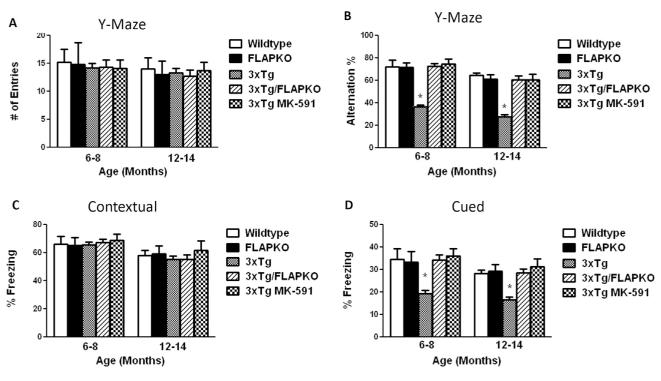Figure 1.
Genetic absence and pharmacologic inhibition of 5-lipoxygenase activating protein (FLAP) ameliorates behavioral deficits of triple transgenic (3×Tg) mice. (A) Total number of arm entries for wild-type (WT), genetically deficient for FLAP (FLAPKO), 3×Tg, 3×Tg-FLAPKO, and 3×Tg-MK-591 mice at 6 to 8 and 12 to 14 months of age. (B) Percentage of alternations between the same groups of mice (*p < .001). (C) Contextual fear memory response in WT, FLAPKO, 3×Tg, 3×Tg-FLAP, and 3×Tg-MK-591 mice. (D) Cued recall fear memory response in the same groups of mice (6–8 months: n = 8 for WT, n = 7 for FLAPKO, n = 12 for 3×Tg, n = 12 for 3×Tg-FLAPKO, n = 7 for 3×Tg-MK-591; 12–14 months: n = 7 for WT, n = 7 for FLAPKO, n = 11 for 3×Tg, n = 12 for 3×Tg-FLAPKO, n = 10 for 3×Tg-MK-591; *p < .001). Values represent mean ± SEM.

